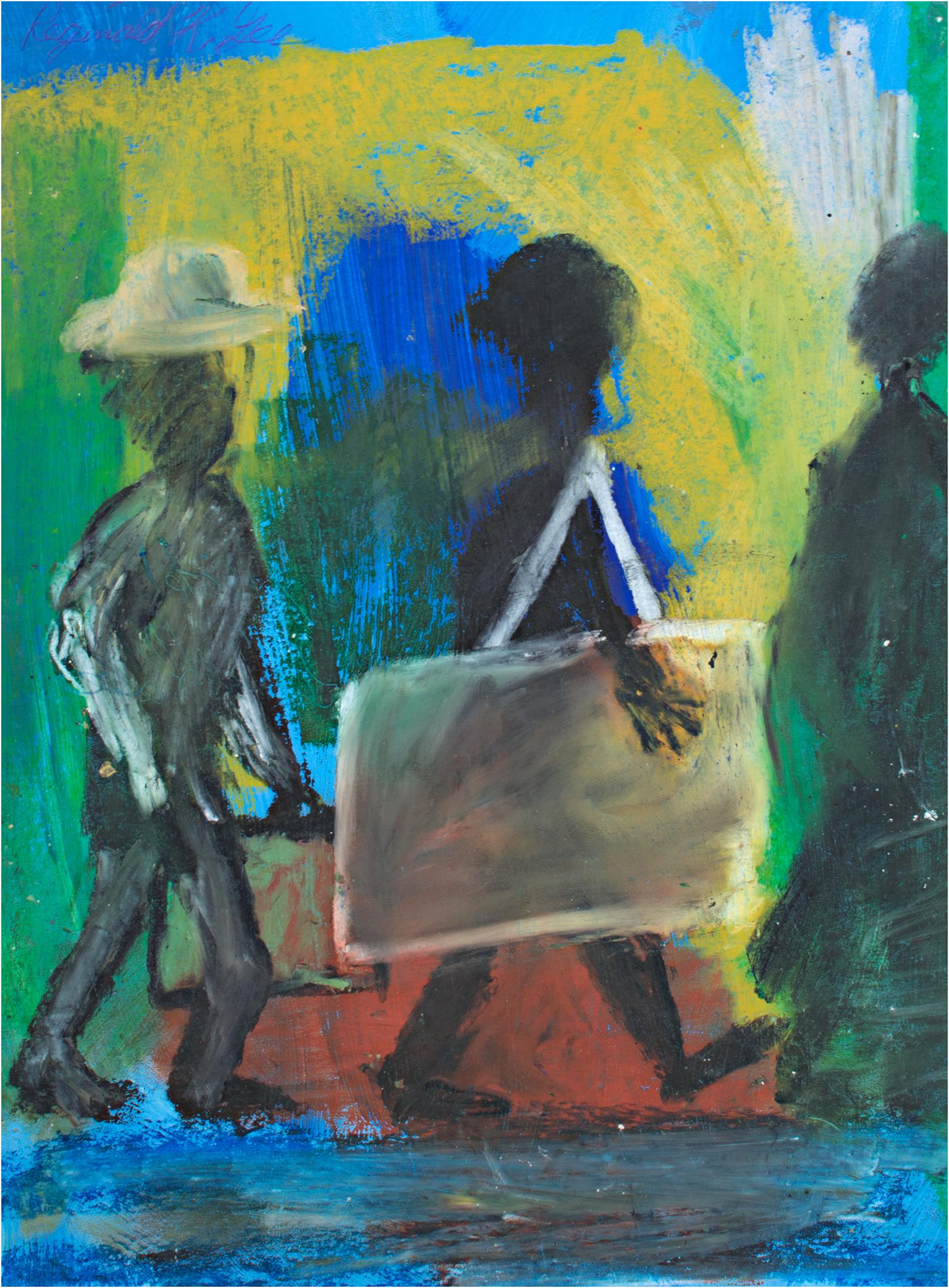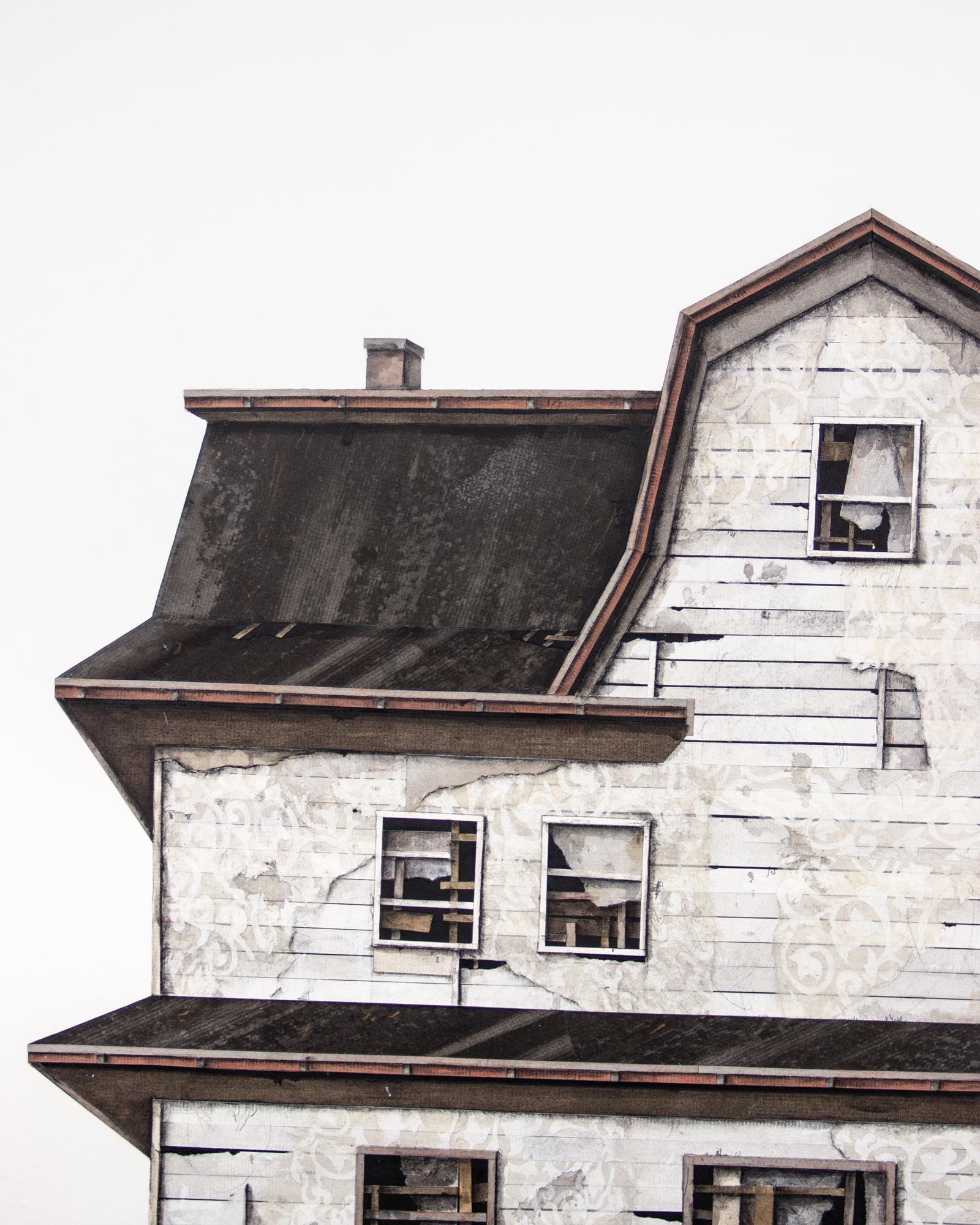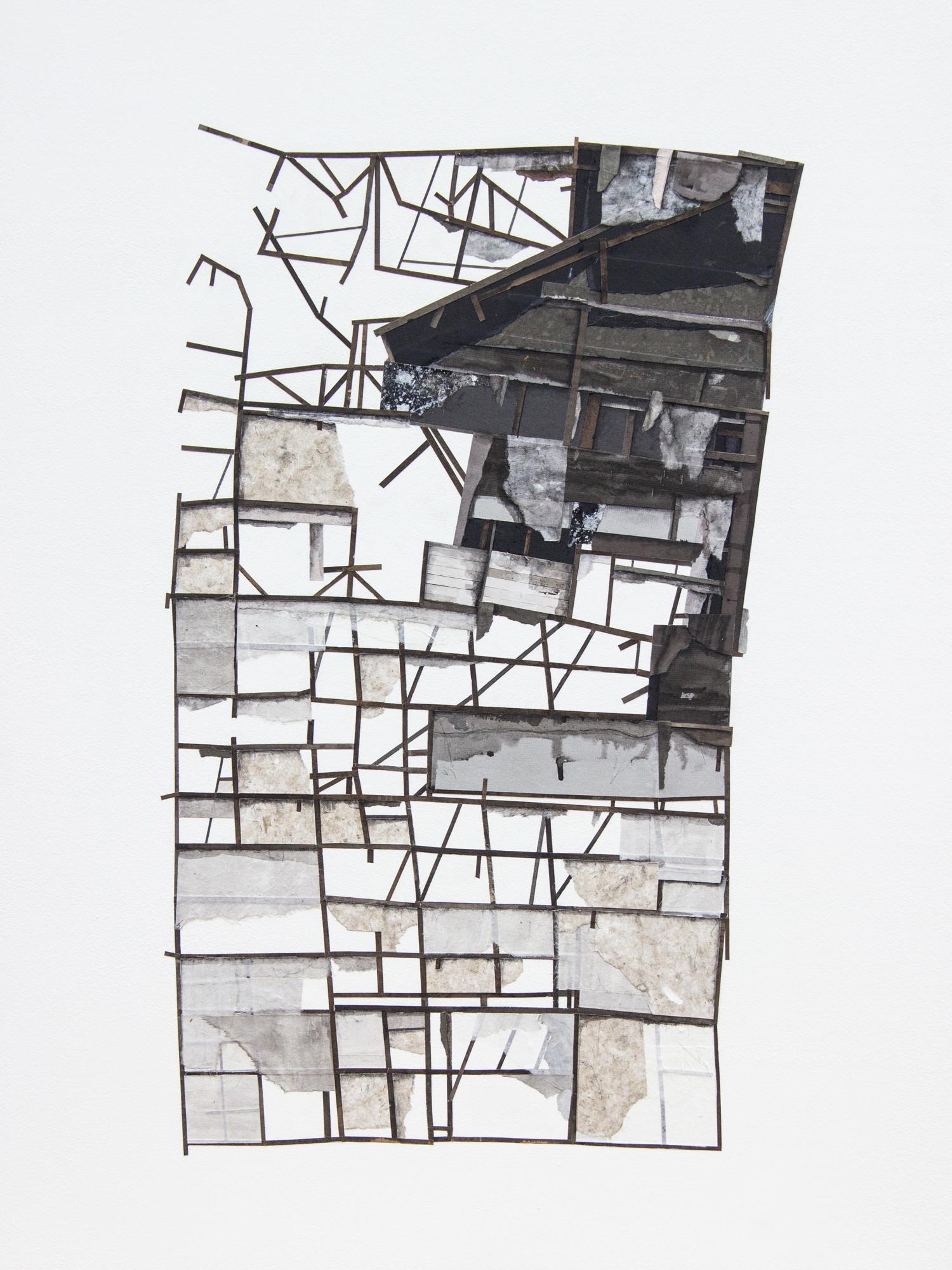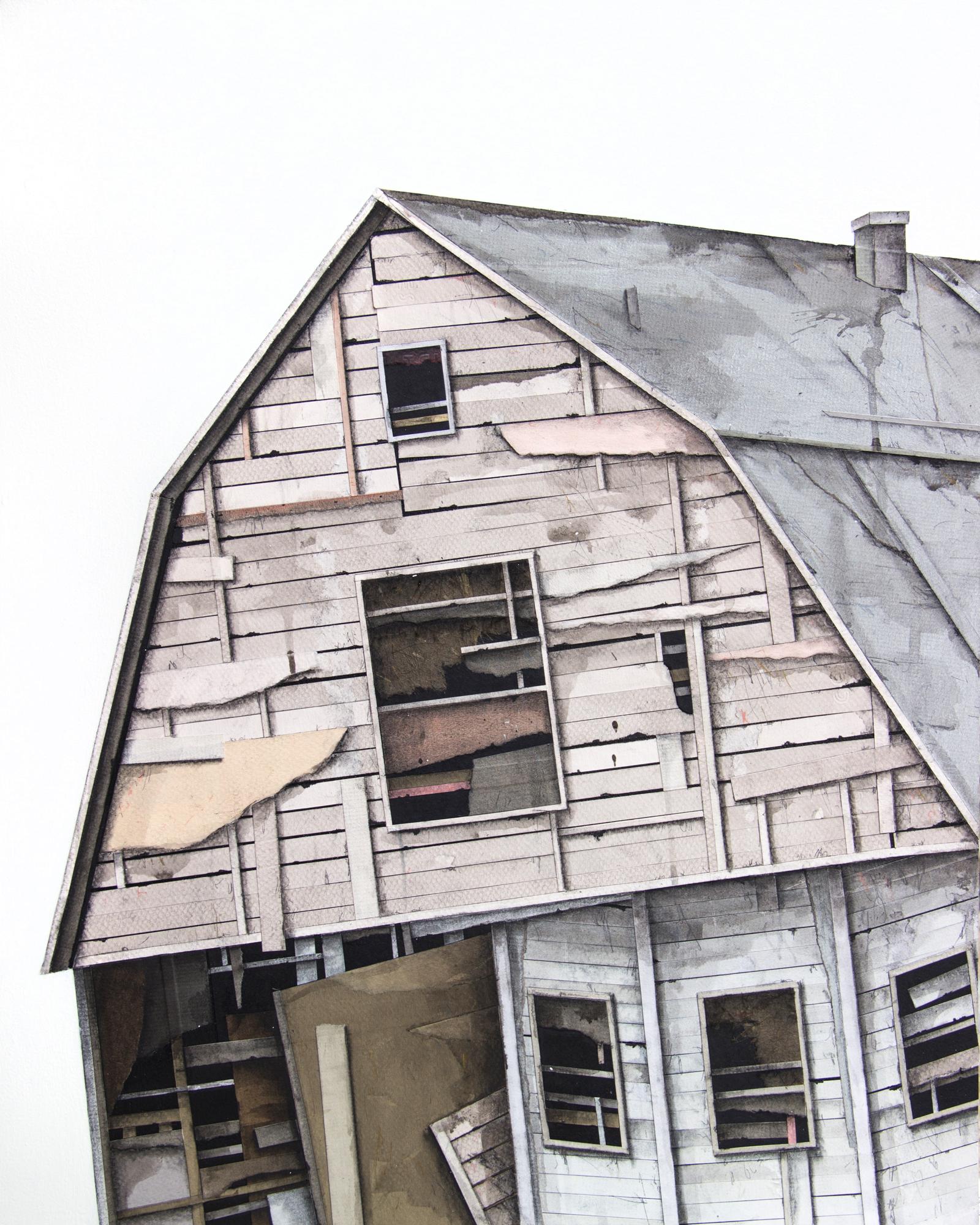Items Similar to One More Time (Black Devil) Outsider Art Painting, Drawing
Want more images or videos?
Request additional images or videos from the seller
1 of 7
Peter DeanOne More Time (Black Devil) Outsider Art Painting, Drawing1983
1983
About the Item
Dean was born in 1934 of Jewish parents in a Berlin, Germany, that was falling prey to the Nazis. The family immigrated to New York City in 1938, and Dean was raised in the refugee community in Inwood. Dean's first show (ironically, in retrospect) was given him by the USIA in Brazil. In 1959, he returned to New York to work six months on, six months off in soil engineering and made art in the interims. He tried, and failed, to get into a Tenth Street Gallery. Studying painting at night with Andre Girard at City College pushed him over the edge, and in 1969 he committed himself to painting full time. Artists who impressed him in the '60s were Robert Beauchamp, Lester Johnson, Jan Muller and Robert Thompson. Dean became visible in New York in the mid '60s when Minimal art seemed to best express the zeitgeist - oddly, since it was a period when even the artworld was swept up in a counter-cultural fervor. In 1965 he was a co-founder of the "Torque" group, which he named after a dream. The members included Joseph Kurhajec, Peter Saul, and Leon Golub. In 1969 Dean co-founded another group, the iconoclastic Rhino Horn, which included Peter Pasuntino, Nick Sperakis, Benny Andrews, Leonel Gongora, Ken Bowman. , Mike Feuerbach, and sometimes, Jay Milder and Red Grooms. This socially critical expressionist outpost, with its unashamedly phallic intentions (the rhinoceros horn) considered an aphrodisiac, did not succeed in penetrating the Minimal/Conceptual strongholds, but it did raise the temperature of the art against the Vietnam war. The group lasted amazingly long, despite the occasional intramural punch out, coming apart in 1975, when the war was over and the elusive, pluralist, and cooled-out '70s began in earnest. Toward the end of the decade, Dean came into his own when "new image" painting, the "East Village scene," and then European neo-expressionism were riding the high horses into the '80s and his own exuberant, raucous style became palatable again.
Dean is truly an expressionist. He has something to express other than mere style. But he is also what used to be called a "painter's painter." Although Dean's style is often compared to that of James Ensor and the Fauves, sometimes it seems closer to the deadly masquerades of Max Beckmann and particularly to the ferocious innocence and high-spirited frankness of Philip Evergood. (The strained sweetness of the women in particular, recalls Evergood, as does the chaotic, quasi Surrealist use of miniature detail, acrid color, and passionate politics.) Escape depicts the almost comic getaway of John Wilkes Booth, who tripped over the flag bunting after shooting Abraham Lincoln, and broke his leg.
Assassination of Malcolm X is curiously static in comparison to the others, recording a moment when time stops. Dean has also painted the sudden deaths of Crazy Horse, Che Guevara, and John Lennon. He seems fascinated by those moments when nobility, fanaticism and fate meet and explode. At its best Dean's painting lifts off, riding a peculiar current of extra-painterly energies that have been likened to those of William Blake and Vincent Van Gogh. Thanks to the swirling compositions, masked and costumed figures, and anarchic tempo, his canvases often evoke Carnival. Dean has spent a lot of time in Louisiana ("People there like my work; they think it's all about Mardi Gras"), where Carnival lies throbbing beneath the rest of the "real" year until its pre-Lenten frenzy is released for a week. And he has lived in Brazil, where members of the Samba clubs will spend the whole year and much of their earnings creating their amazingly opulent costumes. Dean's figures play the roles of mocking clowns like those found in Hopi and Pueblo ceremonies. They inhabit that time and place where fantasy is as real as so-called reality, when things are reversed, as in ritual or madness. Dean is less of a "political" artist than the kind of "religious" artist Native Americans would recognize. He is in touch with the subliminal area between clusters of meaning, those scary places where freedom reigns and borders are crossed. He belongs to that gang of divine fools Barbara Myerhoff has cited in her studies of rites of passage - those who are autonomous, independent, and always betwixt and between: "tricksters, clowns, poets, shamans, court jesters, monks, 'dharma bums', holy mendicants" with an emphasis on "innocence, rebirth, vulnerability, fertility, change, emotion, paradox, disorder, anomaly, opposition, and the like." Recommending an "approach which maintains belief alongside critical consciousness," she writes: "Rituals and symbols are stories we tell ourselves about ourselves, in the realm of art rather than objective reality" (in Victor Turner, ed., Celebration, Smithsonian Institution, Washington, 1982, p. 117, 131). Peter Dean described himself as "an interpreter of reality into fantasy and back again. Known for apocalyptic social satires.
Though his themes were often violent, Dean also adored parades and painted them.
Dean would sometimes use his hands as well as a brush. His scattering of paint across the entire surface reflects a longtime interest in abstract expressionism and particularly Jackson Pollock's habit of distributing paint across the entire canvas rather than having a traditional central focus.
Black Astronaut celebrates, yet also pokes fun at, male fantasies. Phallic rockets frame the scene, raising the obvious association of military prowess with sexual potency. The astronaut was one generation's American hero; the cowboy hat on the NASA official brings to mind an earlier embodiment of American adventure. Another male role model, the cop, takes on a more sinister tone.
SELECTED SOLO SHOWS
Alternative Museum, New York, 1990
North Dakota Museum of Art, Grand Forks, 1989
Darthea Speyer Gallery, Paris, 1981
Alexandra Monett Gallery, Bruxelles, 1976, 1978, 1980
Allan Stone Gallery, New York, 1970, 1973, 1978, 1980
Galerie Noire, Paris, 1979
SELECTED GROUP SHOWS
Tory Folliard Gallery, Milwaukee, 1993
A Tribute to Peter Dean, Einstein Gallery, New York, 1992
Transforming the Western Image. Palm Springs Desert Museum, Palm Springs CA, traveling to Boise Art Museum, Tucson Museum of Art, Rockwell Museum, Coming NY,
Landscapes. Woodstock Artists Association, Woodstock NY 1991
Art of Love. Riverside Art Museum, Riverside CA, 1990
A Different War. Vietnam in Art. Whatcom Museum of Art, Bellingham WA, 1989
The Unquiet Landscape. Arts Club of Chicago, traveling to Frumkin Adams Gallery
Sculpture. Katzen-Brown Gallery, New York, 1988
Fetishes, Figures, and Fantasies. Kenkeleba House, New York, 1986
Selected Works from the New York Collection Members Gallery. Albright-Knox Gallery
Paradise Lost American Visions of the New Decade. Venice Biennale, 1984
Apocalyptic Vision: Four New Imagists. Galleri Bellman, New York, 1983
The Painterly Figure: Veteran Expressionist Figure Painters. Monique Knowlton Gallery,
American Drawings. Galerie Roger D'Amacourt, Paris, 1978
American Academy and Institute of Arts and Letters, New York, 1973
Rhino Horn. The New School for Social Research, New York, 1970,
32nd Corcoran Biennial of American Painting. Washington DC, 1971
III Bienal Internacional del Deporte en las Bellas Artes. Barcelona, 1971
II Bienal Internacional del Deporte en las Bellas Artes. Madrid, 1969
Grotesque, Fetishes, Fantasy. Allan Stone Gallery, New York, 1969
SELECTED COLLECTIONS
Art Institute of Chicago
Ghent Museum of Modern Art, Ghent, Belgium
University of Texas at Austin
Herbert F Johnson Museum of Art,
Cornell University, Ithaca NY
Mint Museum of Art, Charlotte NC
National Gallery of Art, Washington DC
New Orleans Museum of Art
New York Public Library
Rhode Island School of Design
SELECTED APPOINTMENTS
Distinguished Beaumont Professor of Art: Washington University, St. Louis
Visiting artist:
Colgate University
Cranbrook Academy of Art
Louisiana State University
Princeton University
Skidmore College
University of Texas
University of Washington, Seattle
Yale University
GRANTS
National Endowment for the Arts, 1981, 1987
New York State Council of Arts, 1975
- Creator:Peter Dean (1939-1993, American)
- Creation Year:1983
- Dimensions:Height: 21 in (53.34 cm)Width: 29.5 in (74.93 cm)
- Medium:
- Movement & Style:
- Period:
- Condition:
- Gallery Location:Surfside, FL
- Reference Number:1stDibs: LU38212408502
About the Seller
4.9
Platinum Seller
These expertly vetted sellers are 1stDibs' most experienced sellers and are rated highest by our customers.
Established in 1995
1stDibs seller since 2014
1,549 sales on 1stDibs
Typical response time: 1 hour
- ShippingRetrieving quote...Ships From: Surfside, FL
- Return PolicyA return for this item may be initiated within 3 days of delivery.
More From This SellerView All
- Rare Oil Painting Arab Man Bezalel School Jerusalem 1913, JudaicaBy Isaac Lichtenstein 1Located in Surfside, FLExtremely rare work of art from the early Bezalel School of Boris Schatz in Ottoman Palestine. it depicts an Orientalist Arab Sheik in traditional Headwear. YITSKHOK LIKHTENSHTEYN ...Category
Early 20th Century Post-Impressionist Figurative Paintings
MaterialsPaper, Oil Pastel, Oil
- Jerusalem Old City Landscape, Expressionist Judaica Israeli Painting IIBy Andre ElbazLocated in Surfside, FLIn this painting the artist uses gestural brushstrokes, which causes distortion and exaggeration for emotional effect. Andre Elbaz uses as his subject figures walking in old city Jerusalem. André Elbaz (born April 26, 1934, El Jadida, Morocco) is a famous Moroccan painter and filmmaker. Elbaz studied art and theatre in Rabat and Paris from 1950 to 1961. He started painting only at the age of 21, until which age he had been interested mainly in theatre. A few years later, he managed to combine his two passions into a new approach in art-therapy, inventing together with his wife, a psychiatrist, the Pictodrame, which brought him world recognition. His first exhibition, which was very successful, took place in Casablanca in 1961 and earned him an appointment as Professor at the Beaux-Arts school in Casablanca. Years later, in 1976, he exhibited his paintings at the Tel-Aviv Museum. In parallel to his career as a painter, Elbaz is also known as a filmmaker. He produced several short films in France, Canada and the United States. One of them, La nuit n'est jamais complète (The night is never complete), won a prize at the "5th Biennale de Paris in 1967". Among the themes chosen for the many films he produced, there was a short one about the Warsaw Ghetto uprising, as well as a series of drawings entitled Seuls (Alone), with texts written by both Elie Wiesel...Category
20th Century Expressionist Figurative Paintings
MaterialsGouache, Paper
- Jerusalem Old City Landscape, Expressionist Judaica Israeli PaintingBy Andre ElbazLocated in Surfside, FLIn this painting the artist uses gestural brushstrokes, which causes distortion and exaggeration for emotional effect. Andre Elbaz uses as his subject figures walking in old city Jerusalem. André Elbaz (born April 26, 1934, El Jadida, Morocco) is a famous Moroccan painter and filmmaker. Elbaz studied art and theatre in Rabat and Paris from 1950 to 1961. He started painting only at the age of 21, until which age he had been interested mainly in theatre. A few years later, he managed to combine his two passions into a new approach in art-therapy, inventing together with his wife, a psychiatrist, the Pictodrame, which brought him world recognition. His first exhibition, which was very successful, took place in Casablanca in 1961 and earned him an appointment as Professor at the Beaux-Arts school in Casablanca. Years later, in 1976, he exhibited his paintings at the Tel-Aviv Museum. In parallel to his career as a painter, Elbaz is also known as a filmmaker. He produced several short films in France, Canada and the United States. One of them, La nuit n'est jamais complète (The night is never complete), won a prize at the "5th Biennale de Paris in 1967". Among the themes chosen for the many films he produced, there was a short one about the Warsaw Ghetto uprising, as well as a series of drawings entitled Seuls (Alone), with texts written by both Elie Wiesel...Category
20th Century Expressionist Figurative Paintings
MaterialsPaper, Gouache
- Three Rabbis at The Torah, Expressionist Judaica PaintingBy Andre ElbazLocated in Surfside, FLIn this painting the artist uses gestural brushstrokes, which causes distortion and exaggeration for emotional effect. Andre Elbaz uses as his subject three male figures with tefilin are depicted during prayer. André Elbaz (born April 26, 1934, El Jadida, Morocco) is a famous Moroccan painter and filmmaker. Elbaz studied art and theatre in Rabat and Paris from 1950 to 1961. He started painting only at the age of 21, until which age he had been interested mainly in theatre. A few years later, he managed to combine his two passions into a new approach in art-therapy, inventing together with his wife, a psychiatrist, the Pictodrame, which brought him world recognition. His first exhibition, which was very successful, took place in Casablanca in 1961 and earned him an appointment as Professor at the Beaux-Arts school in Casablanca. Years later, in 1976, he exhibited his paintings at the Tel-Aviv Museum. In parallel to his career as a painter, Elbaz is also known as a filmmaker. He produced several short films in France, Canada and the United States. One of them, La nuit n'est jamais complète (The night is never complete), won a prize at the "5th Biennale de Paris in 1967". Among the themes chosen for the many films he produced, there was a short one about the Warsaw Ghetto uprising, as well as a series of drawings entitled Seuls (Alone), with texts written by both Elie Wiesel...Category
20th Century Expressionist Figurative Paintings
MaterialsPaper, Gouache
- Cuban Artist Pastel Drawing African American Emilio Cruz Bonnie & Clyde PaintingLocated in Surfside, FLEmilio Cruz (1938-2004) Bonnie and Clyde Pastel on paper Hand signed lower right Dimensions Framed H 15-7/8" W 18-1/2", Sight H 13-1/2" W 16-1/8" Emilio Antonio Cruz (1938 – 2004) was a Cuban American artist who lived most of his life in New York City. His work is held in several major museums in the United States. Emilio Antonio Cruz was an American Artist of Cuban descent. He was born in the Bronx on March 15, 1938. He studied at the Art Students League of New York with Edwin Dickinson, George Grosz and Frank J. Reilly and at The New School in New York City, and finally at the Seong Moy School of Painting and Graphic Arts in Provincetown, Massachusetts. As a young artist in the 1960s, Cruz was connected with other artists who were applying abstract expressionism concepts to figurative art such as Lester Johnson, Red Grooms, Mimi Gross, Bob Thompson and Jan Muller. He combined human and animal figures with imagery from archaeology and natural history to create disturbing, dreamlike paintings. Cruz received a John Hay Whitney Fellowship and awards from the Joan Mitchell Foundation and from the National Endowment for the Arts. In the late 1968, Emilio and wife Patricia Cruz moved to St. Louis to work with Julius Hemphill and the Black Artists Group. He served as director for the visual arts program, which also included painters Oliver Jackson and Manuel Hughes. In addition to artistic contributions, the couple participated in city-wide civil rights protests and rent strikes. Cruz moved to Chicago and taught at the School of the Art Institute of Chicago during the 1970s, where he exhibited widely and was represented by the Walter Kelly Gallery. He wrote two plays, Homeostasis: Once More the Scorpion and The Absence Held Fast to Its Presence. These were first performed at the Open Eye Theater in New York in 1981, and later were included in the World Theater Festival in Nancy and Paris, France, and in Italy. In 1982 he returned to New York where he began to exhibit again. In the late 1980s he resumed teaching at the Pratt Institute and at New York University. Harry Rand, Curator of 20th Century Painting and Sculpture at the Smithsonian American Art Museum, described Emilio Cruz as one of the important pioneers of American Modernism of the 1960s for his fusion of Abstract Expressionist art with figuration. Geno Rodriguez, Curator and Executive Director of The Alternative Museum, wrote in 1985, "Emilio Cruz, is a brilliant and impassioned artist whose current paintings are monumental, imbued with intelligence, fury and an apt sense of irony. They reflect the turbulent world within which we live." Geoffrey Jacques wrote in 1990, "Emilio Cruz paints humanity’s essence. Mythology and archeology are the foremost concerns of the painter Emilio Cruz. Dinosaurs, skeletal humans and fossil-like images are used in his work as metaphoric signposts in a consideration of the basic questions of existence." Art historian and curator Paul Staiti wrote in 1997, "Emilio Cruz's Homo sapiens series is a strange and haunting genealogy of the modern soul... What is at stake here more than biopolitical culture, is the remystification of the body and mapping of consciousness ... For all the trauma, explicit and implicit, Cruz's style is masterful, classical, even beautiful." Exhibitions Cruz held his first solo exhibition at the Zabriskie Gallery in New York in 1963. Afterwards his work was included in many group and solo exhibitions, including the Anita Shapolsky Gallery in 1986 and 1991, museum exhibitions at the Studio Museum in Harlem in 1987, the Pennsylvania Academy of the Fine Arts in 1997. In 1994, Cruz's work was shown as part of the American contingent at the IV Bienal Internacional de Pintura en Cuenca, Ecuador. Other American artists exhibiting at this show were Donald Locke...Category
20th Century Neo-Expressionist Figurative Drawings and Watercolors
MaterialsPaper, Oil Pastel
- The Mean Hippies (Drawing with Rattlesnake Warrior and Red Rebels) Outsider ArtBy Alex O'NealLocated in Surfside, FLPaper measures 21 X 33 inches Born and raised in Mississippi, Alex O'Neal graduated from Rhode Island School of Design and School of the Art Institute of Chicago. In the Eighties, his formal education overlapped regular visits with Mississippi self-taught artists, including Mary T. Smith, Luster Willis, and Son Ford Thomas. He later immersed himself in art brut collections and European art brut in Switzerland, Germany, and France. His work is also inspired by African-American self-taught outsider art. O'Neal's drawings and paintings have been shown at The Drawing Center, New York; BRIC, Brooklyn; P.S.122, New York; Johnson Museum of Art, Ithaca, NY; Woodruff Arts Center, Atlanta; Tennessee Arts Commission, Nashville; Mississippi Museum of Art, Jackson, MS; Centre d’Art des Pénitents Noirs, Aubagne, France; Contemporary Arts Center, New Orleans; Chicago Cultural Center; Ecomuseu, Valls d'Aneu, Spain; Amory Arts Center, West Palm Beach; Huntsville Museum of Art, AL; Rockefeller Art Center, SUNY Fredonia; ART LA; Field Projects, New York; LOG at Lump Gallery, Raleigh, NC; and Linda Warren Projects, Chicago. His work is in volumes 16, 38, and 104 of New American Paintings. His paintings and drawings idiosyncratically depict circumstances that associate Americans, i.e. dysfunction, nature worship, cults, homegrown terrorism, Hollywood, reverence for Native America. There is formal influence from stylization found in Romanesque fresco, early American portrait painting...Category
21st Century and Contemporary Outsider Art Figurative Paintings
MaterialsOil Pastel, Archival Paper
You May Also Like
- "Deseo" by Anna PennatiLocated in Milano, MIThis work by Anna Pennati is part of a series of works the artist has dedicated to Spanish poets. This one is inspired by a passage from a poem by Luis Ce...Category
2010s Contemporary Figurative Paintings
MaterialsOil Pastel, Acrylic, Canvas
- "Walk, " Figurative Oil Pastel and Acrylic on Paper signed by Reginald K. GeeBy Reginald K. GeeLocated in Milwaukee, WI"Walk" is an original oil pastel and acrylic painting on paper by Reginald K. Gee. The artist signed the piece on the back. This piece features a line of three people walking in fron...Category
1990s Contemporary Figurative Drawings and Watercolors
MaterialsOil Pastel, Acrylic
- Yugpurush, Buddha, Mixed Media on Paper, Red Brown by Indian Artist "In Stock"By Sanatan DindaLocated in Kolkata, West BengalSanatan Dinda - Yugpurush - 28 x 20 inches (unframed size) Mixed Media on Paper Shipment in roll form. Style : Sanatan Dinda discovers the beautiful amidst the ruins of a dilapidate...Category
2010s Contemporary Figurative Paintings
MaterialsPastel, Acrylic, Charcoal, Paper
- "House Studies Series V", Layered Paper and Drawing Collage, ArchitecturalBy Seth ClarkLocated in Philadelphia, PAThis layered paper and drawing collage titled "House Studies Series V" is an original artwork by Seth Clark made of paper, charcoal, pastel, graphite, and acrylic on wood. Through a ...Category
21st Century and Contemporary Contemporary Figurative Paintings
MaterialsPaper, Graphite, Wood, Charcoal, Pastel, Mixed Media, Acrylic
- "Mass Study II", Layered paper collage and drawing, dimensional, architecturalBy Seth ClarkLocated in Philadelphia, PAThis layered paper and drawing collage titled "Mass Study II" is an original artwork by Seth Clark made of paper, charcoal, pastel, graphite, and acrylic on wood panel. Using found ...Category
21st Century and Contemporary Contemporary Figurative Paintings
MaterialsPaper, Graphite, Wood Panel, Acrylic, Pastel, Charcoal
- "House Studies Series II", Layered Paper and Drawing Collage, ArchitectureBy Seth ClarkLocated in Philadelphia, PAThis layered paper and drawing collage titled "House Studies Series II" is an original artwork by Seth Clark made of paper, charcoal, pastel, graphite, and acrylic on wood. Through a...Category
21st Century and Contemporary Contemporary Figurative Paintings
MaterialsPaper, Charcoal, Pastel, Acrylic, Wood Panel, Graphite





